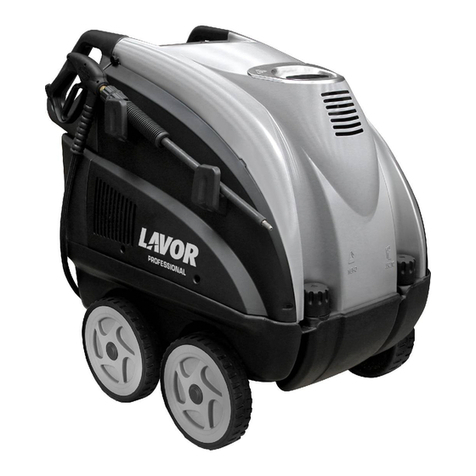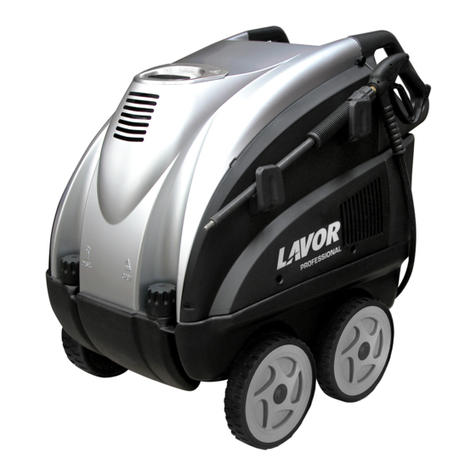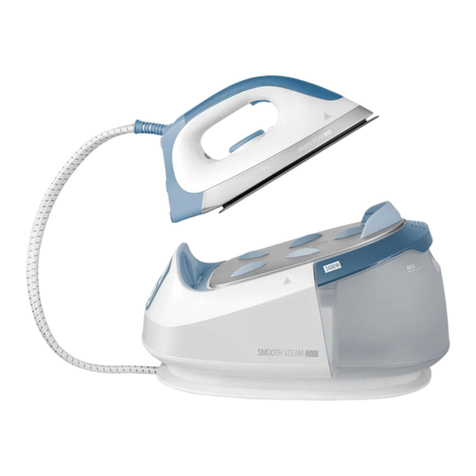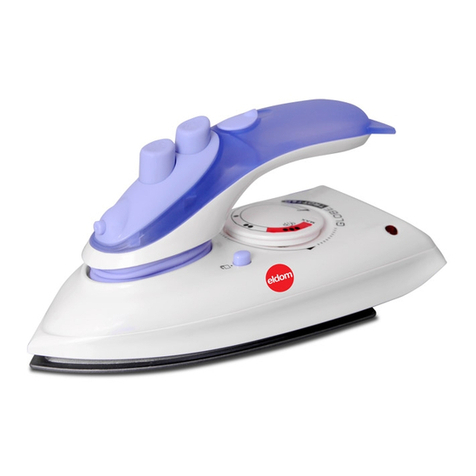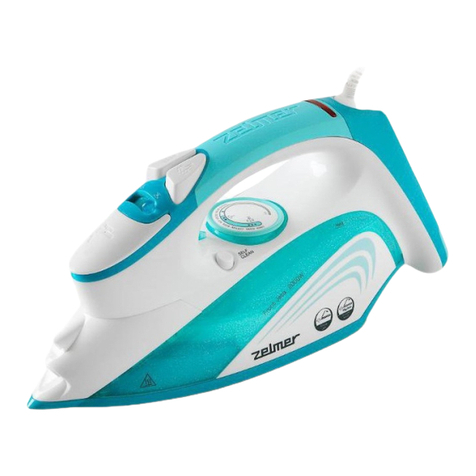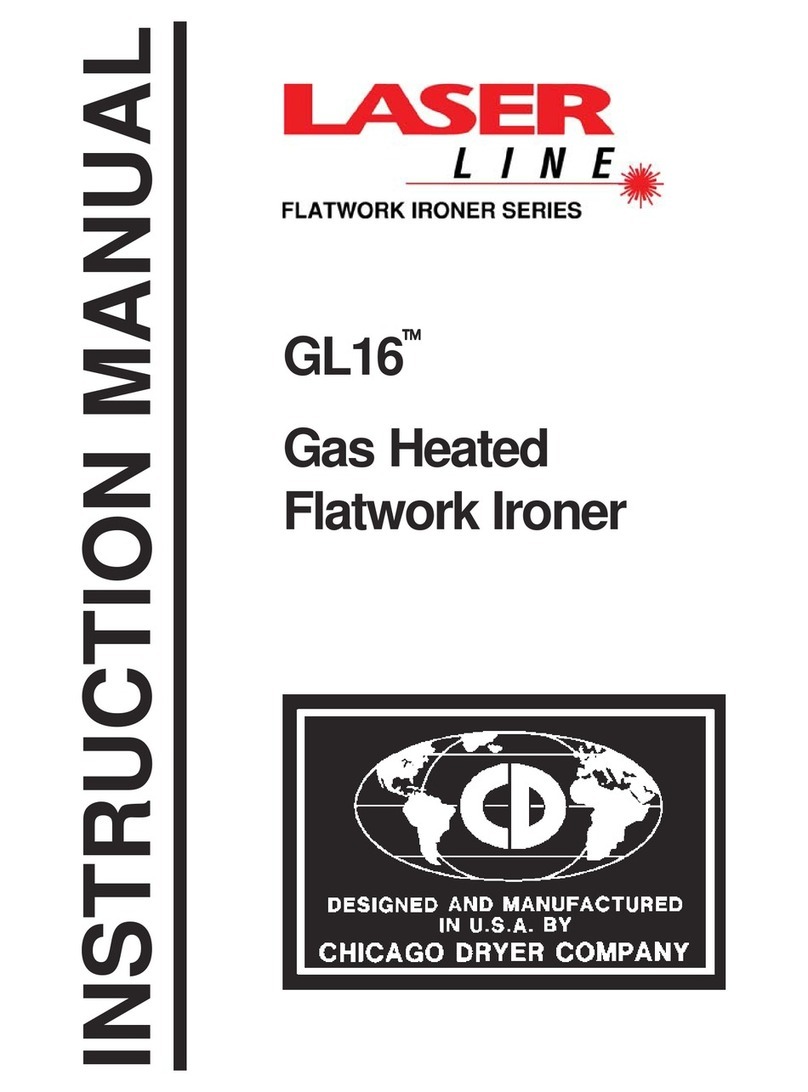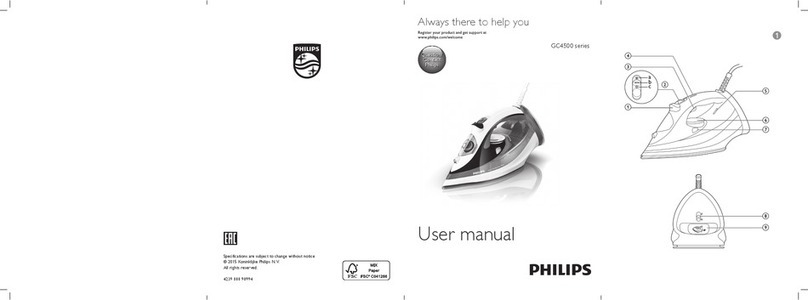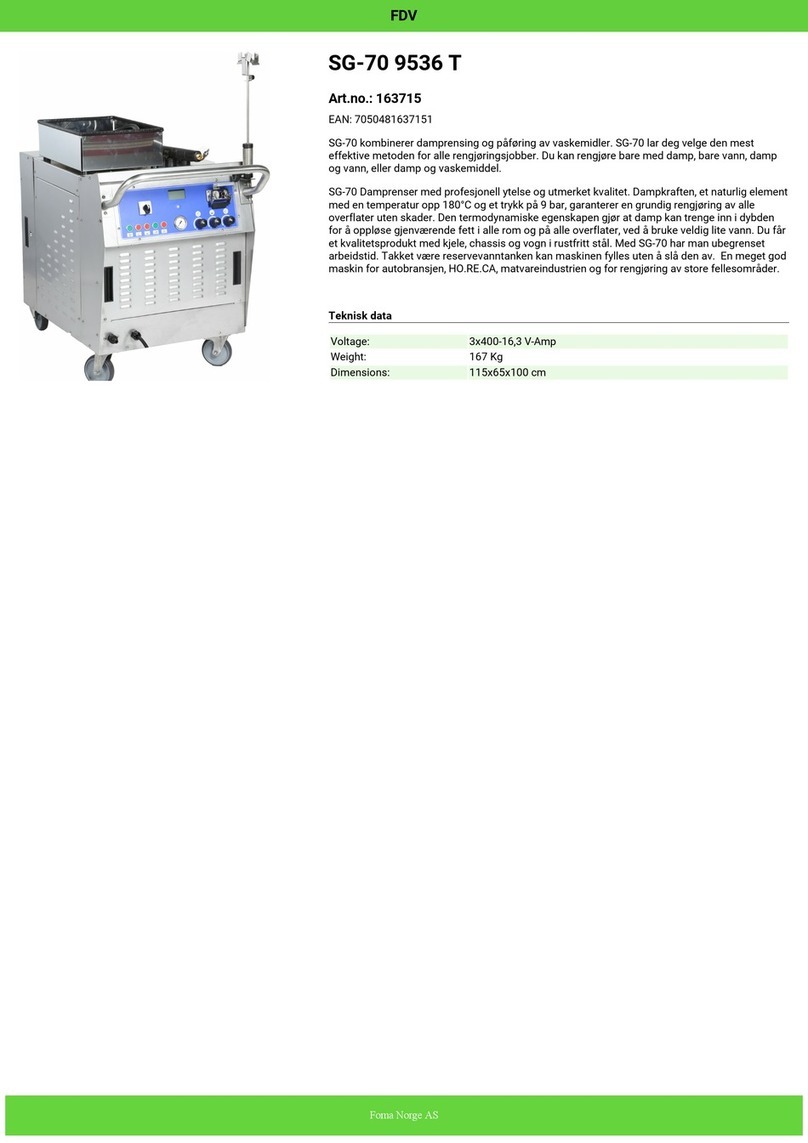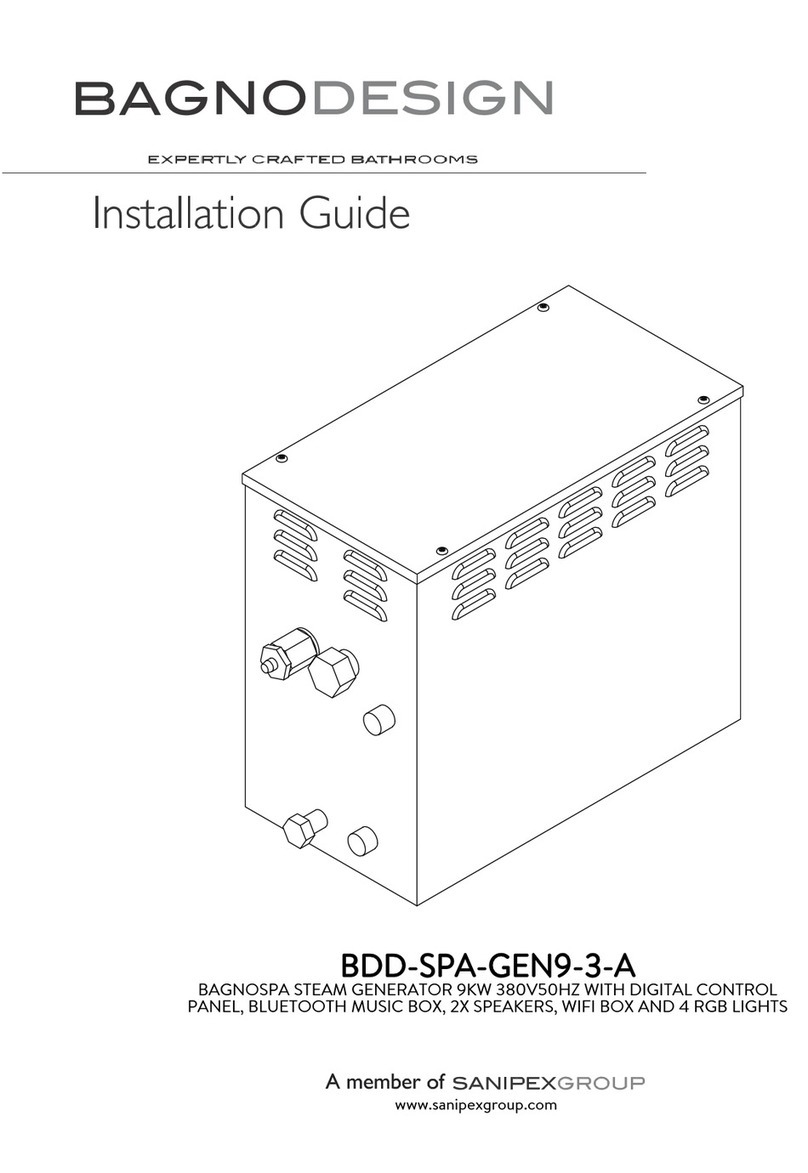Lavor GV 8.0 T PLUS User manual

•
Technical data plate
IT pag. 4
EN pag. 12
FR page 20
ES pág. 28
DE Seite 36
PT pág. 44
SL pag. 52
RU стр. 60
ISTRUZIONI PER L’USO
Attrezzatura polivalente che consente la pulizia a vapore.
USER’S INSTRUCTIONS
Multipurpose steam cleaning equipment.
MODE D’EMPLOI
Appareil polyvalent pour le nettoyage à la vapeur.
INSTRUCCIONES PARA EL USO
Aparato polivalente para la limpieza a vapor.
BEDIENUNGSANLEITUNG
Mehrzweckgerät für die Dampfreinigung.
INSTRUÇÕES PARA USO
Equipamento polivalente que permite a limpeza a vapor.
NAVODILA ZA UPORABO:
Večnamenski aparat, kateri omogoča čiščenje na paro.
ИНСТРУКЦИЯ ПО ЭКСПЛУАТАЦИИ .
Парогенератор
GV 8.0 T PLUS
ATTENZIONE: leggere le istruzioni prima dell’ utilizzo.
WARNING: read the instructions carefully before use.
ATTENTION: lire attentivement les istructions avant l’usage.
ACHTUNG: die anweisungen bitte vor gebrauch sorgfältig lesen.
ADVERTENCIA: leer atentamente las advertencias antes el uso de aparado.
ATENÇÃO: ler atentamente as instruções antes da utilização.
POZOR: Pred uporabo preberite navodila.
ВНИМАНИЕ: Перед началом использования оборудования внимательно
ознакомьтесь с руководством по эксплуатации!

2

3
ACCESSORI
ACCESSORIES
ACCESSOIRES
ACCESORIOS
ZUBEHOERE
ACESSÓRIOS
PRIPOMOČKI
АКСЕССУАРЫ
In base al modello si possono verificare delle differenze nella fornitura. Depending on the model,
there are differences in the scopes of delivery. Suivant le modèle, la fourniture peut varier. Je nach
Modell gibt es Unterschiede im Lieferumfang. Según el modelos, hay diferencias en el contenido su-
ministrado. Consoante o modelo, existem diferenças no volume de fornecimento. Glede na model
prihaja do razlik v obsegu dobave. В данном руководстве по эксплуатации дано описание прибора
с максимальной комплектацией. Комплектация отличается в зависимости от модели.

4
ISTRUZIONI PER L’USO
IMPIEGHI
Generatore di vapore di tipo professionale, adatto
alla pulizia e igienizzazione di qualsiasi superficie,
in modo particolare ovunque si preparino, lavorino
o consumino alimenti: ristoranti, negozi e industrie.
Altri usi: pulizia e igienizzazione di servizi igienici, lo-
cali pubblici e comunità in genere, industrie pesanti,
metalmeccaniche, fonderie e carpenterie, settore
auto, restauro.
AVVERTENZE GENERALI
- Prima di utilizzare la vostra macchina, leggere
attentamente il manuale informativo.
Fornirà importanti indicazioni riguardanti
la sicurezza d’installazione, d’uso e di
manutenzione.
- La mancata osservazione di qualsiasi
indicazione relativa alla sicurezza può dar
luogo a gravi lesioni personali e può inoltre
arrecare gravi danni all’apparecchiatura.
- Conservare con cura questo libretto per
ogni ulteriore consultazione fino allo
smantellamento della macchina.
- Le procedure d’uso e manutenzione devono
essere eseguite correttamente, se trascurate,
il costruttore non può essere considerato
responsabile per eventuali danni a persone,
animali o cose derivanti dalla mancata
osservanza di quanto segue.
- La macchina deve sempre rimanere in
posizione verticale, mai capovolta.
- Le istruzioni riportate non sono certamente in
grado di prevenire qualsiasi incidente, è quindi
responsabilità dell’utente agire con la massima
cautela.
- La macchina è dotata di impianto di sicurezza
con presa a terra. sarà compito dell’utilizzato-
re mettere protezioni contro i cortocircuiti ed
i sovraccarichi in ottemperanza alle norme vi-
genti per proteggere la linea di alimentazione
della macchina, utilizzando interruttori magne-
totermici e differenziali.
- Prima di immettere acqua nel serbatoio,
spegnere la macchina ruotando l’interruttore
generale in posizione off e togliere la spina di
alimentazione dalla relativa presa.
- Non lasciare la macchina inutilmente inserita.
Spegnere l’interruttore generale della
macchina quando la stessa non viene utilizzata.
- Prima di effettuare ogni intervento di
manutenzione ricordarsi sempre di:
* Arrestare la macchina (selettore interruttore
generale in posizione off),
* Scollegare il cavo di alimentazione elettrico.
- Evitare di dirigere la pistola vapore contro
persone o contro oggetti delicati quali
plastiche, cristalli o altro materiale che col
contatto del vapore si possa sciogliere o
deteriorare.
- Gli ugelli erogatori di vapore possono
provocare ustioni, evitare quindi di toccarli a
mani nude.
- La macchina non è stata costruita per lavorare
in ambiente esplosivo, è quindi assolutamente
vietato l’utilizzo della macchina in atmosfera
con pericolo di esplosione.
- Per spostare l’apparecchio utilizzare
unicamente la maniglia di cui è dotato. Mai
spostarlo utilizzando il cavo d’alimentazione o
il cavo della pistola.
- Accertarsi che il recipiente usato per il
riempimento sia pulito e non contenga
impurità o sporcizia.
- Accertarsi del corretto riempimento delle
taniche serbatoio: una solo per acqua potabile
( non demineralizzata, ossigenata, ...) ed una
per detergente o acqua per risciacquo.
01 I componenti usati nell’imballo (es. sacchi in
plastica) possono costituire potenziali pericoli, te-
nerli fuori della portata di bambini ed animali.
02 Ogni utilizzo diverso da quelli indicati sul pre-
sente manuale può costituire pericolo, pertanto
deve essere evitato.
03 Il fabbricante declina ogni responsabilità per
danni causati a persone, animali o cose in seguito
al mancato rispetto di queste istruzioni o se l’ap-
parecchio viene usato in modo irragionevole.
04 Collegare l’apparecchio soltanto se la tensione
di rete coincide con la tensione riportata sulla tar-
ghetta delle caratteristiche e se la presa di alimen-
tazione è dotata di messa a terra.
05 Non afferrare mai la spina del cavo elettrico
con le mani bagnate.
06 Non estrarre la spina dalla presa tirando il cavo.
07 Non trainare l’apparecchio tramite il cavo di
alimentazione.

5
08 Srotolare completamente il cavo di alimenta-
zione prima dell’uso.
09 È sconsigliato l’uso di prolunghe elettriche;
qualora fosse necessario l’impiego, utilizzare pro-
lunghe con il marchio di approvazione di sicurez-
za e munite di messa a terra. Sezione minima cavo
prolunga 2,5mm².
10 Togliere sempre la spina dalla presa di corrente
prima di effettuare qualsiasi intervento sull’appa-
recchio o quando rimane incostudito o alla porta-
ta di bambini o di persone non coscienti dei loro
atti.
11 Controllare scrupolosamente se cavo, spina
o parti dell’apparecchio risultano danneggiate
ed in tal caso non utilizzare assolutamente
l’apparecchio, ma rivolgersi al Servizio As-
sistenza per la sua riparazione.
12 Non utilizzare l’apparecchio per la pulizia a
vapore di apparecchiature elettriche o prese di
corrente.
13 Non lavorare con le mani ed i piedi bagnati
quando l’apparecchio è collegato.
14 Non immergere l’apparecchio in alcun liquido.
15 Non pulire l’apparecchio con il vapore.
16 Manutenzioni e riparazioni devono essere
effettuate sempre da personale specializzato; le
parti che eventualmente si guastassero vanno so-
stituite solo con ricambi originali.
17 Prima di collegare l’apparecchio, accertarsi che
i dati di targa siano rispondenti a quelli della rete
elettrica e che la presa sia protetta con un inter-
ruttore magnetotermico differenziale“SALVAVITA”
con sensibilità di intervento inferiore a 0,03 A -
30ms.
18 Accertarsi che la presa sia conforme alla spina
dell’apparecchio.
19 Non utilizzare l’apparecchio in caso di tempe-
ratura ambiente inferiore a O° C, se esso è equi-
paggiato con cavo in PVC (HVV-F).
20 Il cavo elettrico può essere sostituito esclusiva-
mente da un centro assistenza autorizzato.
25 Non toccare con le mani da vicino il getto di
vapore.
26 Non impedire l’uscita del getto di vapore.
27 Non indirizzare il getto di vapore su persone
o animali.
28 Durante l’uso non coprire l’apparecchio, po-
trebbe surriscaldarsi.
29 Se l’apparecchio viene prestato ad altre perso-
ne, è necessario consegnare loro anche il libretto
di istruzioni.
30 Il prodotto non deve essere usato dai bambi-
ni o da persone con capacità fisiche, sensoriali o
mentali ridotte o mancanti di adeguata esperien-
za e conoscenza, finchè non siano state adeguata-
mente addestrate o istruite.
31 I bambini, anche se controllati, non devono
giocare con il prodotto.
- Mai spostarlo utilizzando il cavo d’alimentazione
o il tubo della pistola.

6
RISCHI RESIDUI
Per poter lavorare in condizioni di massima si-
curezza, onde evitare il crearsi di situazioni
pericolose, si elencano le norme di condotta
che devono essere seguite dall’operatore per
evitare infortuni.
- Se per qualsiasi motivo fosse necessario di-
sarmare tempestivamente la macchina ruo-
tare l’interruttore generale in posizione OFF.
- É assolutamente vietato, durante il funziona-
mento della macchina, togliere le protezioni
predisposte dal Costruttore allo scopo di sal-
vaguardare l’incolumità dell’operatore.
- L’utilizzo della macchina è consentito a per-
sonale esperto e qualificato.
- Non lasciare mai l’apparecchio incustodito.
- L’uso della macchina è consentito ad un solo ope-
ratore.
- Nell’utilizzo della macchina è obbliga-
torio l’uso di guanti di protezione.
- Nell’utilizzo della macchina è obbliga-
torio l’uso di occhiali protettivi..
SEGNALAZIONE DEI RISCHI RESIDUI
Sulla macchina sono presenti le seguenti segnala-
zioni in merito ai rischi residui:
AVVERTIMENTO
PERICOLO PROVOCATO DA VAPORE
BOLLENTE
AVVERTIMENTO
PERICOLO SCOTTATURE
CARATTERISTICHE TECNICHE
DATI TECNICI
(vedi targhetta dati tecnici)
• Alimentazione: PH V Hz
(impugnatura a bassa tensione, V)
• Potenza installata: W
• Capacità caldaia: l
• Capacità riserva d’acqua: l
• Sistema d’alimentazione acqua in caldaia: con
pompa automatica “in continuo”
• Pressione vapore: bar
• Temperatura vapore in caldaia: max. C max
• Dimensioni cm : xx;
• Peso a vuoto: kg
• Peso con accessori: kg
RUMOROSITA’
L’emissione sonora del generatore rilevata in fase
di erogazione del vapore e aspiratore in funzione
risulta essere pari a 89 dBA, inteso come livello equi-
valente (Leq). Durante l’uso della macchina è consi-
gliato indossare idonei mezzi di protezione acustica
(tappi auricolari, cuffie).La garanzia decade qualora
siano state apportate modifiche, manomissioni o
riparazioni eseguite senza lanostra esplicita autoriz-
zazione scritta.
VANTAGGI
Il vapore a 175° C pulisce perfettamente e igienizza
qualsiasi superficie. La macchina è ideale per
rimuovere soprattutto lo sporco grasso, poichè lo
scioglie, facilitandone così l’asportazione con i panni
in microfibra o mediante aspirazione.
Un corretto impiego del vapore permette di ridurre
di oltre l’80% i detergenti e di oltre il 90% i disinfet-
tanti, risolvendo così i problemi degli scarichi. Inol-
tre si possono ridurre del 30% le ore di manodopera.
Il generatore è di costruzione professionale con
componenti di alta qualità e risponde alle principali
normative di sicurezza internazionali. La caldaia cer-
tificata è in acciaio inossidabile ad alta resistenza. Gli
innesti dei tubi vapore hanno un doppio blocco di
sicurezza e sono realizzati su progetto originale in
materiale esclusivo, particolarmente resistente.

7
DESCRIZIONE DEI DISPOSITIVI
DELLA MACCHINA
Interruttore generale. Da corrente alla
macchina se ruotato in posizione ON.
Viceversa se ruotato in posizione OFF la
macchina viene disarmata.
Pannello di comando:
A: Spia verde di LINEA
B: Spia rossa di GUASTO
C: Spia verde di CALDAIA PIENA
D:Spia gialla di CALDAIA MANCANZA
ACQUA
E: Spia verde di RISCALDAMENTO
F: Spia verde di POMPA ACQUA
G: Spia verde di POMPA SAPONE attivato
H: Spia verde di VAPORE
I: Pulsante ABILITA EROGAZIONE SAPONE
K: Pulsante ABILITA SCARICO MACCHINA
Presa multipla:
A= Presa vapore;
C= Presa corrente con bloccaggio di protezione
Manopola regolazione quantità di vapore.
Consente di variare la quantità di vapore
da erogare, ruotandola in senso orario o
antiorario.
Manometro per l’indicazione della pressione
del vapore nella caldaia.
AVVERTENZA: Non usare acqua distillata! La
macchina non funzionerebbe correttamente.
6 Tanica di riserva acqua.
7 Tanica di riserva detergente (opportunamente di-
luito in acqua).
7.401.0231
POWER
SOAP ON
DRAIN
FAILURE
FULL
BOILER
EMPTY
BOILER
HEATING
WATER
PUMP
SOAP
PUMP
STEAM
A
1
B
C
3
3A
3CD
45
E
F
G
H
I
K
2
6 7

8
ACCESSORI
- Aprire lo sportellino A, inserire l’attacco rapido
B del tubo flessibile nella presa della macchina
e premere a fondo.
- Per lo sgancio del tubo flessibile, aprire lo spor-
tellino A, premere il pulsante di sgancio C ed
estrarre la presa.
ACCENSIONE E MESSA IN SERVIZIO
DELLA MACCHINA
1) Controllare il livello dei serbatoi di acqua e deter-
gente. Eventualmente effettuare il riempimento.
2) Collegare la spina di alimentazione alla presa di
corrente.
3) Ruotare l’interruttore generale (1) in posizione
ON.
4) Attendere lo spegnimento della spia verde di RI-
SCALDAMENTO (E) e controllare che il manome-
tro (5) indichi una pressione pari a 9 bar.
A questo punto la macchina è pronta per l’uso.
5) Per l’erogazione del detergente premere il pul-
sante ABILITA EROGAZIONE SAPONE (I).
Oppure: premere il
pulsante ABILITA EROGAZIO-
NE SAPONE
(J) SULLA PISTOLA
SPEGNIMENTO DELLA MACCHINA
1) Premere il pulsante ABILITA SCARICO MACCHINA
(K), così facendo si disabilitano le resistenze e la
pompa dell’acqua.
2) Fare uscire con la pistola tutto il vapore che c’è
in caldaia.
3) Ruotare l’interruttore generale (1) in posizione
OFF.

9
INTERVENTI DI MANUTENZIONE
SVUOTAMENTO DELLA CALDAIA
La caldaia in acciaio inox ha caratteristiche
adeguate per poter utilizzare acqua normale. È
buona regola ogni settimana, o nel caso che la
macchina non venga usata, svuotare la caldaia
utilizzando l’apposito rubinetto B.
È molto importante provvedere alla pulizia dei
tubi e della caldaia per evitare la formazione di
calcare.
Per ovviare a questo problema, bisogna seguire
alcune istruzioni fondamentali:
- non lasciare mai la macchina inutilmente
accesa, spegnere l’interruttore generale della
macchina quando la stessa non viene utilizzata.
Se la formazione del calcare dovesse essere
notevole, utilizzare un’apposito disincrostante
oppure una miscela di acqua e aceto,
procedendo nel seguente modo:
- attendere il raffreddamento della macchina.
- agire sul rubinetto di scarico B per svuotare la
caldaia.
- versare la miscela di acqua e aceto oppure il
disincrostante nella tanica di riserva acqua.
- riempire la caldaia.
- nel caso si utilizzi il disincrostante, lasciarlo
agire per almeno ore.
Se si utilizza la miscela di acqua e aceto, invece,
lasciare agire per ore.
B
M
M
Una volta trascorso il tempo necessario per la
disincrostazione del calcare, agire come segue:
- accendere la macchina e spegnerla quando il
manometro segna una pressione di , - bar; si
crea in questo modo una pressione interna alla
caldaia, sufficiente per fare uscire l’acqua ed il
calcare.
- aprire il rubinetto di scarico B per fare uscire il
contenuto della caldaia.
Se si notassero molti residui di calcare, ripetere
l’operazione finchè l’acqua scaricata non risulta
priva di calcare.
N.B: durante l’operazione di pulizia caldaia,
evitare di erogare vapore dalla pistola.
- Una volta terminata l’operazione, chiudere con
cura il rubinetto B.
- Una adeguata manutenzione costituisce
fattore determinante per una maggiore durata
della macchina in condizioni di funzionamento
e di rendimento ottimali e per garantire
le condizioni di sicurezza predisposte dal
Costruttore.
- Le operazioni di manutenzione, sostituzione e
riparazione devono essere affidate a personale
tecnico qualificato, che sia a conoscenza delle
tecnologie applicate alla macchina.
SMALTIMENTO
Quale proprietario di un apparecchio elet-
trico o elettronico, la legge (conformemen-
te alla direttiva UE 2002/96/CE del 27 gen-
naio 2003 sui rifiuti di apparecchiature
elettriche ed elettroniche e alle legislazioni
nazionali degli Stati membri UE che hanno messo in
atto tale direttiva) Le vieta di smaltire questo pro-
dotto o i suoi accessori elettrici/elettronici come ri-
fiuto domestico non separato. È tenuto invece a far
uso dei previsti punti di raccolta gratuiti.
In caso di rottamazione della macchina o di parti di
essa, occorrerà prendere delle precauzioni di sicu-
rezza onde evitare rischi connessi con operazioni
di smantellamento di macchinario industriale.
Fare particolare attenzione durante le seguenti fasi:
-
Smontaggio della macchina dalla zona operativa.
-
Trasporto e movimentazione della macchina.
-
Smantellamento della macchina.

10
-
Separazione dei diversi materiali che compongo-
no la macchina.
Inoltre per effettuare la demolizione e lo smaltimen-
to della macchina, è necessario osservare alcune
regole fondamentali atte a salvaguardare la salu-
te e l’ambiente in cui viviamo:
Eliminare anche il più piccolo residuo d’
olio e grasso a bordo della macchina; le
sostanze lubrificanti non dovranno es-
sere disperse nell’ ambiente, ma dovran-
no essere recuperate o trattate da un’azienda
specializzata nello smaltimento di tali prodotti.
Qualora i materiali usati per il processo produttivo o
i lubrificanti e le acque di condensa non vengano
smaltiti secondo le Leggi ed i Regolamenti in ma-
teria, possono sussistere rischi residui come:
1) Inquinamento ambientale.
2) Intossicazione delle persone addette
allo smaltimento.
Per le operazioni di separazione dei materiali ed il
loro riciclaggio o smaltimento, occorre fare riferi-
mento alle Leggi Nazionali o Regionali in materia
di smaltimento di rifiuti solidi industriali e di rifiuti
tossici e nocivi;
Guaine, condotti flessibili e componentistica in ma-
teriale plastico o comunque non metallico, do-
vranno essere smontati e smaltiti separatamente;
Componenti pneumatici ed elettrici come valvole,
elettrovalvole, regolatori di pressione, interrutto-
ri, trasformatori, ecc., dovranno essere smontati
per poter essere riutilizzati, nel caso siano ancora
in buone condizioni oppure, se possibile, revisio-
nati e riciclati.
La carcassa e comunque tutte le parti metalliche
della macchina dovranno essere smontate e rag-
gruppate per tipo di materiale. Le varie parti così
ottenute potranno poi essere demolite e fuse per
permettere il riciclaggio del materiale costituente
la macchina originaria.
Lo smaltimento dei prodotti considerati
tossico - nocivi va effettuato in ottempe-
ranza alle Leggi Nazionali e Regionali,
conferendo i rifiuti a smaltitori appartenenti al Con-
sorzio autorizzato smaltimento oli esausti.
GARANZIA
La macchina è fornita imballata in scatola di cartone
e ogni eventuale intervento deve essere eseguito
solo ed esclusivamente dal nostro Servizio Assi-
stenza. La garanzia non si applica se difetti o mal-
funzionamenti della macchina sono stati causati da
incidenti, da negligenza, da uso irragionevole, da
uso improprio e/o da altre cause non riconducibili
a difettidimateriale o dimanodopera. Èobbligatorio
l’uso di ricambi originali.
Tutti diritti sono riservati
E’ proibita la riproduzione di questo manuale, anche se parziale,
in qualsiasi forma (stampa, fotocopie, microfilms o altrimezzi) e
così pure l’elaborazione, la riproduzione o la diffusione mediante
sistemi elettronici.

11
TABELLA DI MANUTENZIONE ORDINARIA
OPERAZIONE PARTE MACCHINA PERIODICITÀ
Scarico acqua - Tutti i giorni
Pulizia caldaia (smontando le resistenze e
pulendole dal calcare)
-Ogni anno
Controllo visivo Macchinario + pistola
----------------------------------
Parti elettriche
Settimanale
Tenuta condotte vapore
e acqua + pistola
Mensile
Pulizia interna -Ogni anno
Pulizia generale -Settimanale
PROBLEMI cause SOLUZIONI
1
IL GENERATORE NON
SALE IN PRESSIONE
- Contattore resistenze.
- Pressostato.
- Resistenza.
- Controllare il contattore
resistenze.
- Controllare il pressostato.
- Controllare la resistenza.
2
LA POMPA NON
FUNZIONA
. Non carica acqua
. Segnale acustico
. Non entra in funzione
- Serbatoio acqua vuoto.
- Pompa.
- Mancanza d’acqua nel
serbatoio.
- Pompa.
- Controllo livello elettronico.
- Sonda livello acqua.
- Riempire il serbatoio.
- Sostituire la pompa.
- Riempire il serbatoio.
- Sostituire la pompa.
- Controllarlo ed eventualmente
sostituirlo.
- Pulire la sonda.
3LA VALVOLA DI SICUREZ-
ZA SI APRE RIPETUTAMEN-
TE
. Carica acqua
continuamente
- Sonda livello acqua
caldaia.
- Controllo livello elettronico.
- Pressostato.
- Contattore resistenza.
- Valvola di sicurezza.
- Pulire la sonda.
- Sostituirlo.
- Sostituire il pressostato e
controllare che il tubo di rame
di collegamento sia libero da
incrostazioni.
- Sostituire il contattore
resistenze.
- Sostituire la valvola di sicurezza.

12
USER’S INSTRUCTIONS
La carcassa e comunque tutte le parti metalliche
della macchina dovranno essere smontate e rag-
gruppate per tipo di materiale. Le varie parti così
ottenute potranno poi essere demolite e fuse per
permettere il riciclaggio del materiale costituente la
macchina originaria.
USES
Professional steam generator suitable for cleaning
and sterilising all types of surface, especially tho-
se used for food preparation, production or con-
sumption such as restaurants, stores and industrial
environments.
Other uses: cleaning and sterilising sanitary servi-
ces, public bathrooms, premises used by the public
in general, heavy industry, foundries, metal work
shops, car wash , restoration works.
GENERAL WARNING ADVICE
- Before using your machine, read the instruction
manual with care.
It has been provided to supply you with impor-
tant information concerning safety during machi-
ne installation, use and maintenance.
- Failure to observe any instructions concerning sa-
fety can provoke serious personal injury, and can
cause damage to the machine.
- Keep this manual in a safe place for consultation
at all times, until the machine is demolished.
- All procedure concerning use and maintenance
must be followed with utmost care. Failure to do
so will relieve the manufacturer of any responsibi-
lity for injury to persons and animals, or damage
to objects as a result of incorrect machine use.
- The machine must always be kept in an upright
position, never reversed.
- The instructions provided in this manual cannot
prevent all injuries and damage so it is the opera-
tor’s resposibility to use the machine with care.
- The machine is equipped with a safety system
complete with earthing. The user is responsible
for providing protection against short circuiting
and overloading according to current standards
and regulations to protect the machine supply
line, by applying magnetothermal differential
switches.
- Before filling the tank, switch off the machine by
turning the main switch to off position, and remo-
ving the machine cable plug from the main line
socket.
- Never leave the machine plugged into the socket
when not in use. Switch off the main switch whe-
never the machine is not in use.
- Before beginning any maintenance operations
always remember to:
- Switch off the machine (main switch in off posi-
tion),
- Disconnect the machine cable from the main line
socket.
- Never point the steam gun in the direction of per-
sons or delicate objects made of materials such as
plastic, crystal, or materials that can melt or dete-
riorate when in contact with steam.
- The steam nozzles can provoke burning. Never
touch the nozzles with bare hands.
- This machine is not designed for use in explosive
environments, so it is strictly forbidden to use the
machine in areas where there is any danger of ex-
plosion.
- Use the handles provided to move the machine,
do not handle in any other manner.
Never move the machine by pulling on the supply
cable or the steam gun hose.
- Make sure that the container used to fill the ma-
chine is perfectly clean before filling with water.
- Verify the correct filling of the two tanks: one
is for the drinkable water (not demineralized,
oxygenated,....) The other is for the detergent or
rinsing water.
GENERAL WARNING
SAFETY PRECAUTIONS
01 Components contained in the package (e.g.
plastic bags) could be dangerous; keep them out
of reach of children and pets.
02 The use of this machine for anything not spec-
ified in this manual may be dangerous and must
be avoided.
03 The manufacturer cannot be held responsible
for any damage/injury caused to persons, animals
or property caused by misuse of the appliance,
not in compliance with manual instructions.
04 Plug in the appliance only if the power voltage
is the same shown on the rating plate and only if
the power supply mains has a protective earthing
system.
05 Do not touch the plug of the power cable with
wet hands.

13
06 Do not pull the plug by its power cable.
07 Do not drag the appliance by its power cable.
08 Unwind the power cable completely before
use.
09 Avoid using electrical extension cables; if
necessary, use an extension cable with a safety
approval mark with a protective earthing system.
Minimum size of extension cable is 2.5 mm².
10 Never carry out any maintenance on the ma-
chine without first disconnecting from the mains
supply or when it is left unattended or reachable
by children or disables.
11 Periodically examine the mains cable and
machine for damage. If any damage is found,
do not use the appliance but contact your ser-
vice centre for repair.
12 Do not use the appliance for steam cleaning
electrical appliances or electric sockets.
13 Once the appliance is plugged in, do not work
with wet hands or feet.
14 Do not immerse the appliance in any liquid.
15 Do not steam-clean the appliance.
16 Service and repairs must be carried out by
qualified personnel only. Only use manufacturer
original spare parts for service repair.
17 Before connecting the appliance, make sure
that the nameplate data are the same as those of
the electrical mains and that rhe socket is protect-
ed by a differential security breaker with tripping
sensitivity below 0.03 A - 30 ms.
18 Ensure that power sockets used ore correct for
the machine.
19 Never use the appliance in ambient tempera-
tures below 0°C if it is equipped with a PVC (H VV-
F) cable.
20 The electric cable must be replaced only by an
authorised service centre.
25 Do not put your hands close to the steam jet.
26 Never obstruct the steam outlet.
27 Do not point the steam jet towards people or
animals.
28 During use the appliance could overheat if
covered.
29 If the appliance is lent to someone else, the
instruction manual should also be passed on.
30
The appliance is not to be used by chil-
dren or persons with reduced physical, sen-
sory or mental capabilities, or lack of experi-
ence and knowledge, unless they have been
given supervision or instruction.
31
Children being supervised not to play
with the appliance.
-
never use the power supply cable or the gun hose
to move it.

14
ADDITIONAL RISKS
In order to work in the maximum safety conditions
and to avoid any dangerous situation and acci-
dent, the operator must follow the operating in-
structions and regulations listed below.
- If the machine must be disarmed immediately for
any reason whatsoever, turn the main switch to
the OFF position.
- During the machine functioning, it is strictly for-
bidden to remove the safety devices assembled
by the builder on the machine in order to protect
the operator while performing his tasks.
- Only skilled and qualified operators can use the
machine.
- Never leave the machine unattended.
- To work, the machine requires only one operator.
- It is obbligatory to wear protective glo-
ves when using the machine.
- It is obbligatory to wear protective gog-
gles when using the machine.
WARNING ABOUT THE ADDITIONAL
RISKS
The following warning plates are applied to the ma-
chine:
WARNING Danger from hot steam.
WARNING Danger of scalding
TECHNICAL CHARACTERISTICS
TECHNICAL DATA
(see technical data plate)
• Supply: 3PH 400V 50Hz
(low voltage handle, 18V)
• Installed power: 800 W
• Boiler capacity: 5 litres
• Water tank capacity: 5 litres
• Boiler water supply system: continuous
automatic pump
• Steam pressure: 9 bar
• Steam temperature in boiler: max. 175°C
• Measurements in cm: 62 x 40 x 86
• Empty weight: 37 Kg
• Weight with accessories: 39 Kg
NOISE EMISSION
Noise emission readings for the generator during
the steam discharging phase and with the vacuum
in operation are equal to 89 dBA, understood as an
equivalent level (Leq).
During the machine’s operation, it is recommended
to wear suitable acoustic protection devices (ear-
plugs, ear-muffs).
ADVANTAGES
Steam at 175° C cleans and sterilises all surfaces
perfectly. This machine is especially suitable for
removing greasy dirt because it melts the substance
making removal easy with micro fibre cloths or by
vacuum cleaning. When used correctly, this machine
can reduce detergent use by more than 80%, and
disinfectants by over 90%, thus resolving drainage
problems.
This system also reduces labour time by 30%. This
generator is a professional machine with high
quality components that comply with all main
international safety standards. The certified boiler
is built in high resistance stainless steel. The steam
hose connections are equipped with a double safety
block and are manufactured from an original design
using specially resistant materials.

15
MACHINE COMPONENT
DESCRIPTION
1 Main switch. This connects the machine on line
when turned to ON position. Vice versa, the ma-
chine is disconnected when the switch is in OFF
position.
2 Control panel:
A: Green POWER pilot light
B: Red FAILURE pilot light
C: Green FULL BOILER pilot light
D: Yellow EMPTY BOILER pilot light
E: Green HEATING pilot light
F: Green WATER PUMP pilot light
G: Green SOAP PUMP pilot light
H: Green STEAM pilot light
I: SOAP ON button
K: DRAIN button
3 Multiple socket:
3A= Steam socket;
3C= Presa corrente con bloccaggio di protezione
4 Adjustment knob for steam control. This vari-
es the quantity of steam required by rotating in
clockwise or opposite direction.
5 Pressure gauge to indicate steam pressure in the
boiler.
3C= Presa corrente con bloccaggio di protezione
WARNING - Never use distilled water! The
machine may not run correctly.
6 Water reserve tank.
7 Detergent reserve tank (properly diluted in wa-
ter).
7.401.0231
POWER
SOAP ON
DRAIN
FAILURE
FULL
BOILER
EMPTY
BOILER
HEATING
WATER
PUMP
SOAP
PUMP
STEAM
A
1
B
C
3
3A
3CD
45
E
F
G
H
I
K
2
6 7

16
B
M
M
ACCESSORIES
Put the gun plug in the special socket then block it
by means of the two levers;
CONNECTION TO FLEXIBLE HOSE:
- Open hatch A, insert the rapid snapon
attachment B of the flexible hose into the
machine connection, and push in as far as
possible.
- To disconnect the flexible hose, open hatch
A, press the release button C and extract the
hose.
STARTING UP AND OPERATING THE
MACHINE
1) Check the level of the water and detergent
tanks. If necessary, fill these tanks.
2) Connect the supply cable to the main line so-
cket.
3) Turn main switch (1) to ON position.
4) Wait for the green HEATING light (E) to turn itself
off and make sure the gauge (5) shows a pressu-
re reading of 9 bar.
At this point, the machine is ready for operation.
5) To discharge the detergent, press the SOAP ON
button (I).
Or: press the SOAP ON button (J) to top gun.
SWITCHING OFF THE MACHINE
1) Press ENABLE DRAIN button (K) to disable the
resistances and water pump.
2) Using the pistol, allow all the steam in the boiler
3) Turn the main switch (1) to the OFF position.
MAINTENANCE OPERATIONS
EMPTYING OUT THE BOILER
The stainless steel boiler presents specifications
which enable its use with normal water. As a
rule, once a week, or if the machine is not being
operated, empty out the boiler using the spe-
cial tap B.
It is very important to clean the hoses and boiler
thoroughly to prevent lime from forming.
To eliminate this problem, please follow these fun-
damental instructions:
- never leave the machine switched when not in
use. Switch off the machine main switch when it
is not in use.

17
In case the machine - or any of its component - must
be scrapped, it is necessary to adopt all the safety
measures in order to avoid any risks deriving from
the dismantling of industrial machinery.
A particular care must be taken during the following
phases:
- Disassembling of the machine from the
working area
- Transport and handling of the machine
- Dismantling of the machine
- Separation of the different materials
composing the machine.
To demolish and dismantle the machine, it is neces-
sary to observe some important rules for the safe-
guard of one’s health and of environment where we
live:
Eliminate any residue of oil and grease
from the machine; the lubricating sub-
stances must not be dispersed in the
environment, but regenerated or trea-
ted by a Company specialised in the dismantling or
such products.
In case the materials used for the productive pro-
cess or the lubricants and the condensation waters
are not eliminated according to the Laws and Regu-
lations in force, there can be other additional risks
such as:
1) Environmental pollution.
2) Intoxication of the people in charge
of the dismantling operations.
Refer to the National or Regional Laws relevant to
the elimination of industrial solid wastes and to-
xic and noxious wastes, when carrying out the
separating, recycling or dismantling operations
of the materials:
Sheaths, flexible pipes and plastic or non metallic
components, must be disassembled and disman-
tled separately; Pneumatic and electric compo-
nents such as valves, solenoid valves, pressure
regulators, switches, transformers , etc ., must be
disassembled to be used again, in case they are
still in good conditions or, if possible, overhauled
and recycled.
If there is a considerable quantity of lime formation,
use a specific descaling product for lime elimina-
tion, or a mixture of vinegar and water, procee-
ding as follows:
- wait till the machine has cooled down comple-
tely.
- open the discharge cock B to empty the boiler.
- pour a mixture of water and vinegar, or a specific
descaling product into the water reserve tank.
- fill the boiler.
- when specific descaling products are used, leave
the product to act for at least 3 hours.
When using vinegar and water, leave it for 12 hours.
Once sufficient time has passed for the products to
remove the lime, proceed as follows:
- power on the machine and then switch it off
when the gauge shows a pressure reading of 0.5
- 1 bar; this will create an internal pressure in the
boiler, sufficient to allow water and limescale to
be removed.
- open the discharge cock B to allow the contents
of the boiler to be removed.
If there is still a certain quantity of lime present repe-
at the operation until the discharged water is free
of lime deposits.
N.B: during the boiler cleaning operation, avoid
letting out steam from the pistol.
- Once the operation has been completed, close
the cock B carefully.
- Adequate and suitable maintenance operations
are a deciding factor for long machine life, correct
working conditions, top performance, and to en-
sure that all the safety systems provided by the
manufacturer function correctly.
- Maintenance, repairs and replacement opera-
tions must be performed by qualified technicians
familiar with the machine technology.
DISPOSAL (WEEE)
As owner of an electrical or electronic pro-
duct, you are not allowed by law (according
to EU-Directive 2002/96/EC of 27 January
2003 on waste electrical and electronic
equipment and the particular national laws
of the EU-Member States transforming this Directi-
ve) to dispose of this product or its electrical/elec-
tronic accessories as unsorted domestic waste. You
shall use the designated gratis possibilities for re-
turn instead.

18
The housing and in any case all the metallic parts of
the machine must be disassembled and grouped
according to each type of material. The various
parts, thus obtained, can be demolished and mel-
ted, in order to recycle the material composing
the original machine.
Noxious-toxic products must be elimina-
ted in compliance with the National or
Regional Laws in force, through special
draining channels belonging to the Consortium spe-
cialised in the elimination of used oils.
GUARANTEE
The guarantee will not be considered valid if any
modifications, tampering or repairs have been
made on the machine without the manufacturer’s
written authorisation. The machine is delivered
packed in a cardboard carton, and any interventions
made on the machine must be performed
exclusively by the manufacturer’s assistance
service only. This guarantee is not applicable to
any faults or malfunction caused by accidents,
negligence, unreasonable use, incorrect use and/
or other reasons that are not caused by faults in
manufacturer’s materials or labour. It is obbligatory
to use original spare parts.
All rights reserved.
The reproduction of this operating handbook,
although partially, under any form (print,
photocopies, microfilms or other means) as well as
its processing, reproduction or diffusion by means
of electronic systems is forbidden.

19
ROUTINE MAINTENANCE TABLE
OPERATION MACHINE PART PERIODICITY
Boiler steam blow-off - Every day
Boiler cleaning (disassemble the resistors
and remove the limestone)
-Every year
Visual control Machinery + gun
------------------------------------------
Electric parts
Every week
Sealing of the water and steam
conductor + gun
Every mont
Internal cleaning -Every year
General cleaning -Every week
TROUBLES CAUSES SOLUTIONS
THE GENERATOR PRESSU-
RE DOES NOT INCREASE
- Resistance contactor
- Pressure switch
- Resistance
- Check the resistance contactor
- Check the pressure switch
- Check the resistance
THE PUMP CANNOT RUN
. It loads no water
. Sound allarm
. It does not run
- The water tank is empty
- Pump
- Lack of water in the tank
- water solenoid valve
- Pump
- Water level probe
- Fill the tank
- Replace the pump
- Fill the tank
- Replace the pump
- Check and eventually replace it
- Clean the probe
THE SAFETY VALVE OPENS
REPEATEDLY
. It keeps on
loading water
- Boiler water level probe
- Check the electronic level
- Pressure switch
- Resistance contactor
- Safety valve
- Clean the probe
- Replace it
- Replace the pressure switch
and check that the connection
copper tube is free from
incrustations.
- Replace the resistance contactor
- Replace the safety valve

2020
MODE D’EMPLOI
EMPLOIS
Générateur de vapeur de type professionnel indi-
qué pour le nettoyage et l’hygiénisation de n’impor-
te quelle surface et, en particulier, des lieux où les
aliments sont préparés, travaillés ou consommés:
restaurants, magasins et industries.
Autres emplois: nettoyage et hygiénisation de sa-
nitaires, lieux publics et communautés en général,
industries lourdes, métallurgiques et mécaniques,
fonderies, et charpenteries, automobile, travaux de
restauration.
MISES EN GARDE GÉNÉRALES
- Avant d’utiliser votre machine, lisez attentive-
ment le manuel.
Il vous fournira d’importantes indications au sujet
de la sécurité durant l’installation, l’utilisation et
l’entretien de la machine.
- La non-observance des indications relatives à la
sécurité peut provoquer de graves lésions per-
sonnelles et endommager sérieusement l’appa-
reil.
- Conserver soigneusement ce livret pour toute
consultation future jusqu’au démantèlement de
la machine.
- Les procédures d’utilisation doivent être effec-
tuées correctement; en cas de négligence, le
constructeur ne saurait être tenu responsable
pour d’éventuels dommages aux personnes, ani-
maux ou objets dérivant de la non-observance de
ce qui suit.
- La machine doit toujours rester en position verti-
cale; elle ne doit jamais être retournee.
- Les instructions rapportées ne sont certes pas en
mesure d’eviter les accidents; l’utilisateur devra
donc agir avec une extrême prudence.
- La machine est equipee d’une installation de
sécurité pourvue d’une prise de terre. L’opéra-
teur devra se charger d’installer des protections
contre les courts-circuits et les surcharges confor-
mément aux normes en vigueur afin de protéger
la ligne d’alimentation de la machine, en utilisant
des interrupteurs magnetothermiques et des dif-
férentiels.
- Avant d’introduire de l’eau dans le réservoir,
mettre la machine hors tension en plaçant l’inter-
rupteur général sur off et ôter la fiche d’alimenta-
tion de la prise correspondante.
- Ne pas laisser la machine inutilement branchée.
Éteindra l’interrupteur général de la machine
lorsque cette dernière n’est pas utilisée.
- Avant d’effectuer une quelconque intervention
d’entretien, se rappeler:
- De mettre la machine hors tension (sélecteur
interrupteur général sur off), - de débrancher le
câble d’alimentation électrique.
- Éviter de diriger le pistolet a vapeur vers des per-
sonnes ou contre des objets délicats tels que plas-
tiques, verres ou autres matériaux qui, au contact
de la vapeur, pourraient fondre ou se détériorer.
- Les becs de distribution de la vapeur peuvent
provoquer des brûlures. Par conséquent, éviter
de les toucher avec les mains nues.
- La machine n’a pas été construite pour travailler
dans un environnement explosif: il est donc for-
mellement interdit de l’utiliser dans une atmos-
phère présentant un risque d’explosion.
- Pour déplacer l’appareil, utiliser exclusivement la
poignée dont il est équipe.
Ne jamais le déplacer en utilisant le câble d’ali-
mentation ou le câble du pistolet.
- S’assurer que le récipient utilise pour le remplis-
sage est propre et ne contient ni impuretés ni
saletés.
- S’ assurer du correct remplissage de réservoirs: un
pour l’ eau potable (pas déminéralisée, oxygénée
) et l’ autre pour le détergent ou eau pour le rin-
çage.
PRINCIPALES MISES EN GARDE
01 Les éléments de l’emballage (sacs en plas-
tique) représentent un danger potentiel. Ne les
laissez pas à la portée des enfants ni des animaux.
02 Toute utilisation autre que celle indiquée sur
le présent manuel peut constituer un danger qui
peut donc être évité.
03 Le fabricant décline toute responsabilité pour
des dommages causés aux personnes, animaux
ou choses par suite de manque de respect de
ces instructions ou si l’appareil a été utilisé d’une
façon anormale.
04 Ne branchez l’appareil que si la tension de sec-
teur coïncide à celle indiquée sur la plaque signa-
létique et si la prise de courant est dotée de mise
à la terre.
05 Ne saisissez jamais la fiche mâle avec les
This manual suits for next models
1
Table of contents
Languages:
Other Lavor Iron manuals

